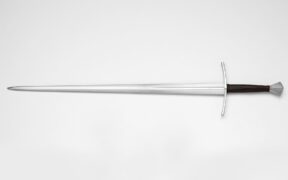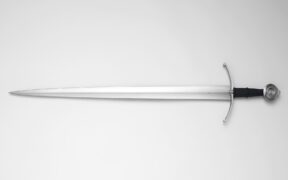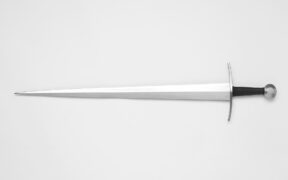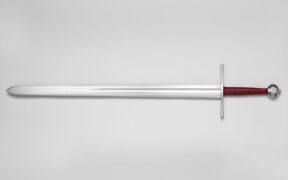Oakeshott Type XIV Swords: Key Features & Purpose
NO AI USED This Article has been written and edited by our team with no help of the AI
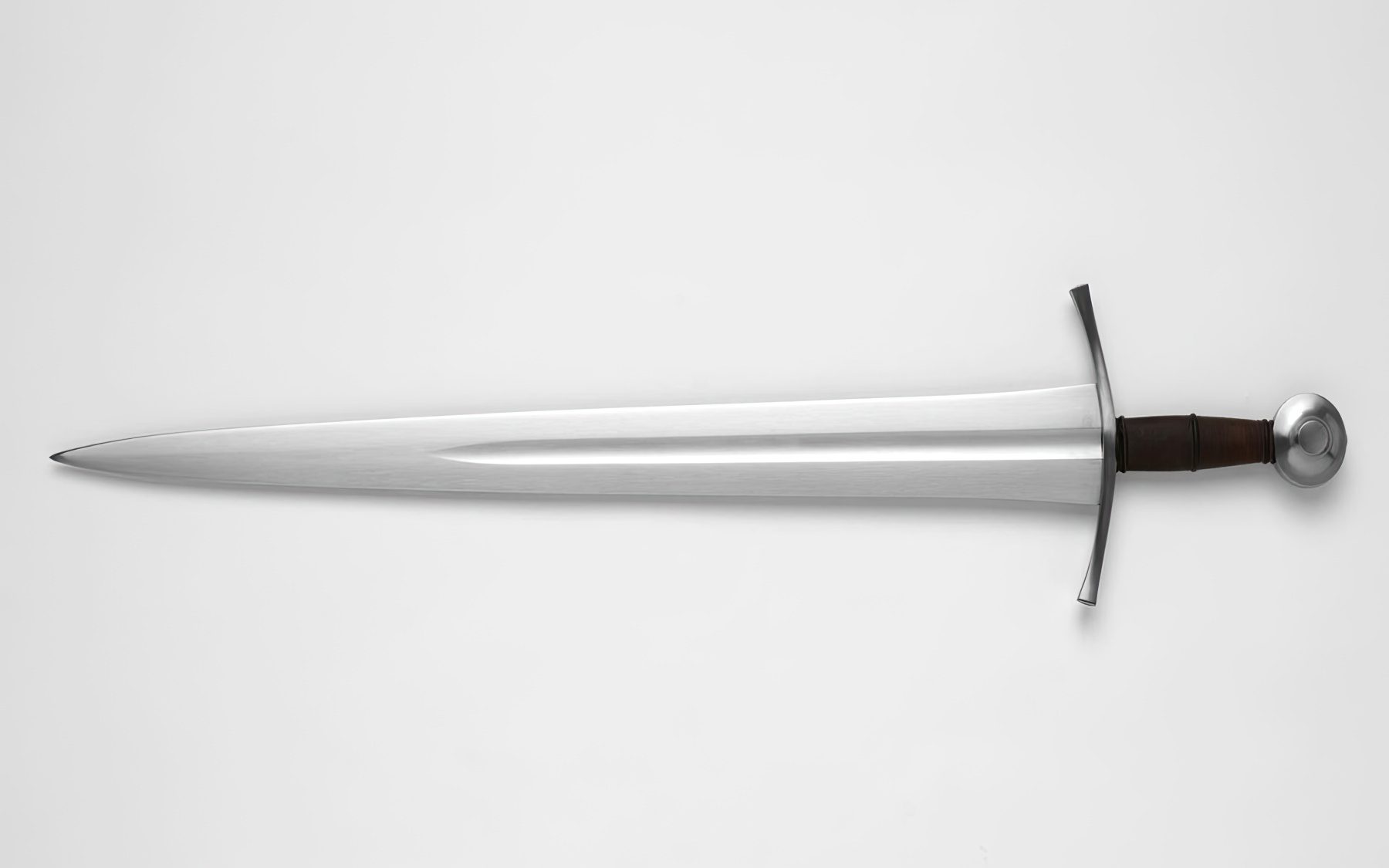
The Oakeshott type XIV is the fifth double-edged European sword group in Oakeshott’s Typology. The XIV had a pivotal design in European sword making from around 1250 to 1350 and set a new standard that influenced many future sword types. It was a favored choice by European knights while remaining a top pick among contemporary sword enthusiasts for functional cutting tests.
Ewart Oakeshott was a British amateur historian with a strong passion for European swords and armor. The Oakeshott Typology, his classification blade system of the Middle Ages, offers a detailed way to categorize double-edged European swords, spanning from the late Viking period through the Renaissance.
In this article, we are going to delve into the type XIV sword and its unique characteristics that became an inspiration for a number of European sword types. We will explain how the sword was used, touch upon its history, and introduce some historical pieces still preserved in museums today.
Characteristics of Type XIV Swords

Type XIV swords are some of the easiest to recognize thanks to their unique attributes, particularly the blade design. They had experimental traits, such as the broad, tapering blade different from contemporary swords. Its distinctions have led some sword marketers and enthusiasts to label it as the “medieval broadsword,” a term that often causes confusion as it is traditionally associated with the later Scottish broadsword.
Blade

The Oakeshott type XIV has a straight, double-edged blade that is lenticular in its profile and broad near the hilt, a characteristic that tapers gradually toward the blade’s tip. This was an early attempt by European blacksmiths to make a sword effective for thrusting attacks without sacrificing its cutting attribute. The result was a lighter blade that could easily be navigated for thrusting and cutting offense.
The XIV had a narrow fuller that tapered towards the blade, helping to lighten the weight. The blade could feature more fullers but typically extended through half of the blade’s length. It sometimes flattened out towards the end with a subtle yet detectable mid-rib. The parallel tang underneath the handle is thick, sometimes with the fuller extending through it.
Hilt (Guard and Pommel)
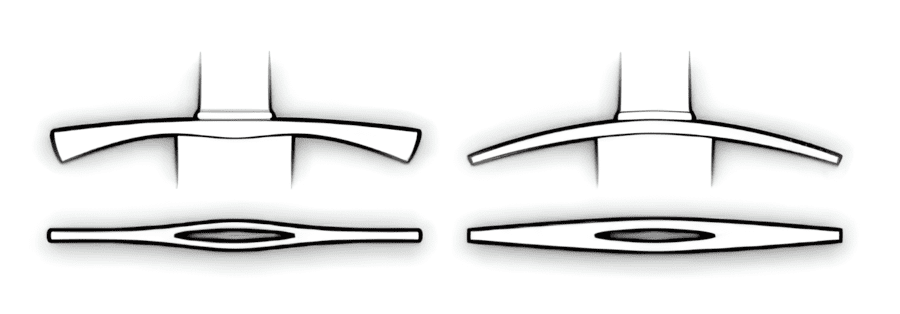
The hilt of this Oakeshott sword type is generally short and one-handed. Type XIV swords have crossguards that narrow toward the blade. They can be impressively sized and taper thinly towards their quillons or be equally broad throughout the entire length. Some examples of straight Type XIV crossguards can be seen on previous Oakeshott-type swords, but these are extremely rare.
These large crossguards worked well with the thickness and width of the blade near the hilt. They could be effective defensive tools and give the user’s hand enough room to use the sword freely for cutting or precise thrusting attacks.
The pommel for the Type XIV sword was almost always of the wheel form design. It could, however, vary in size and thickness from sword to sword. This well-sized pommel gave the sword a good balance of weight, also acting as a reliable backstop for the hand, improving control and usability.
Size and Weight
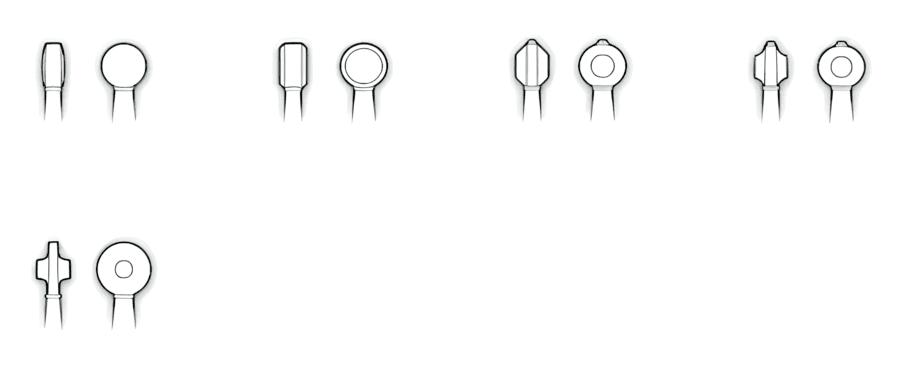
The Oakeshott type XIV sword is generally not large in proportion and significantly smaller than some of the earlier types, especially XIII. It was a one-handed sword that could be used effectively from a mounted position or in conjunction with a shield and weighed around 2 to 2.8 lbs (0.9 to 1.3 kg).
The blade length of the type XIV was from 26 to 33 inches (66 to 84 cm) with a slightly longer handle than average, which was around 3.75 to 4.5 inches (9 to 11 cm). This made its overall sword length around 37 inches (94 cm) long, making it a weapon of many uses in combat situations.
Uses for the Type XIV Swords
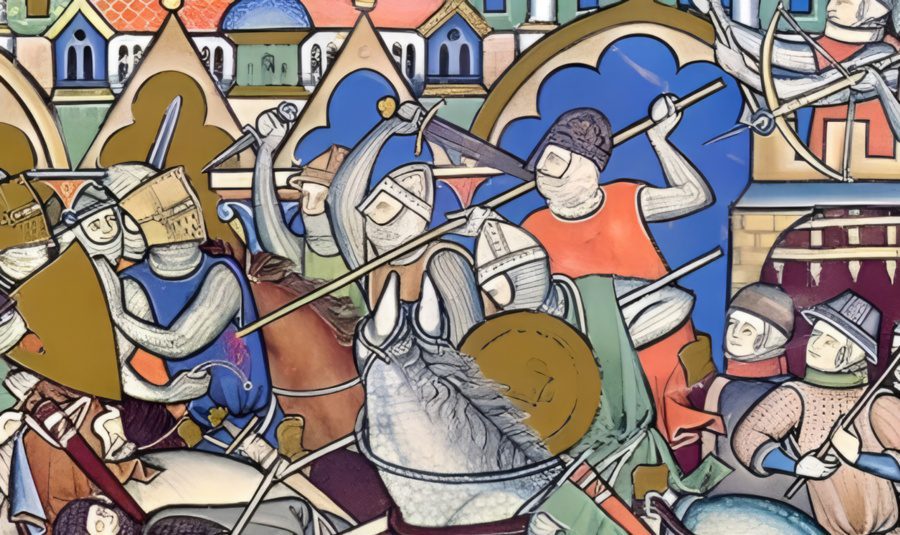
Type XIV swords were the earliest designs of medieval edged weapons that were as effective in cutting as previous Oakeshott type swords. They were also ideal for thrust attacks. Its spacious blade neck was useful for devastating cuts, while its tapered, acute tip point was effective for stabbing and slipping through gaps in the enemy armor. European blacksmiths with the type XIV made the earliest experimental cut-and-thrust type of sword that had great efficiency.
This cut and thrust attribute made it a well-rounded weapon that quickly grew in popularity due to the evolving armor of the late 13th century. It was frequently used by almost all European cultures on the battlefield and can be seen in more than 80% of the effigial monuments of medieval knights.
History and Historical Examples of Type XIV Swords
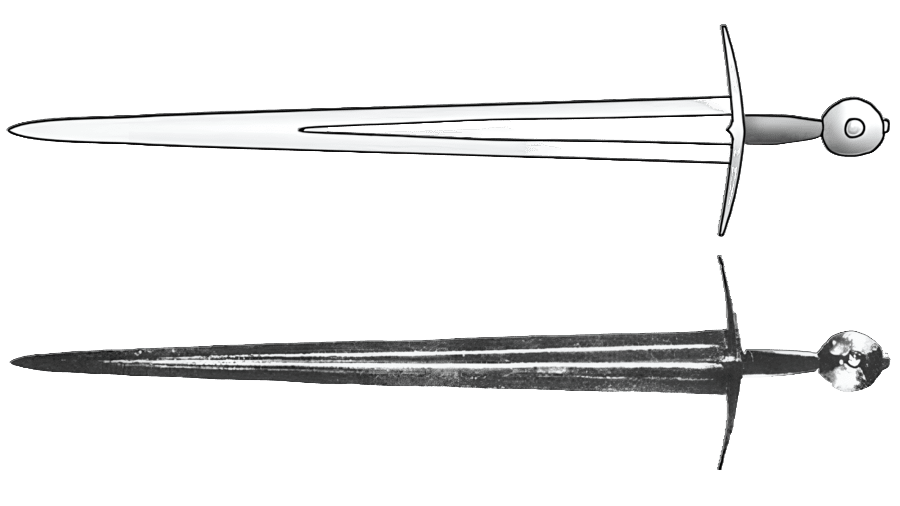
The Oakeshott type XIV sword is the last European double-edged blade in the group of cutting swords made to counter chainmail. It is one of the most widespread swords to be used from the mid-13th to the mid-14th century, a period of drastic improvements in armor that saw a much higher quantity of chainmail being used. Other additional protection included boiled leather garments, gambesons, coat of plates, couters, poleyns, schynbalds, and plate armor added to vulnerable parts of the body.

These improvements in armor were very effective for the previous cutting-type blades, type X through type XIII. That is why the tapering blade of the XIV was not only necessary in combat as older-style swords began to lose their effectiveness but also crucial.

The XIV type arming sword would be the victor in the race against armor for a straight century. It was used by most European knights, particularly during some of the Scottish War of Independence’s major battles, such as Stirling Bridge, Falkirk, Dunbar, and Bannockburn. It can be seen on most effigial monuments of knights, as well as illustrations of its use during the time.

This transitional type would be replaced with stronger tapering swords, but its blade design served their direct inspiration, which Oakeshott grouped as weapons made to stand up against plate armor. While only a handful of type XIV surviving historical swords remain today, their unique design has become iconic among modern sword enthusiasts.
